The global feminine hygiene product market was expected to grow from USD 35.7 billion in 2019 to USD 57.78 billion by 2027, at a CAGR of 6.2% during the forecast period 2020-2027.
Feminine hygiene products are personal care commodities used by ladies, formed in films of quilted cotton fabrics and alternative layers of super-soft polymers and synthetics, which is impermeable to liquids. These products include sanitary pads, tampons, panty liners, feminine hygiene wash and menstrual cups.
Increasing demand for organic- and biodegradable raw material-based products, increasing disposable income of the middle class, rising health concerns due to ingredients used in conventional sanitary products, rising level of consumer education and increase in awareness about alternative hygiene products, increase in women’s appetite for quality hygiene products, etc. are some of the market forces of the global feminine hygiene product. However, increase in usage of such products raises environmental hazards. Increase in environmental consciousness may restrict growth of this market.
Based on the product type, the global feminine hygiene products market is segmented into sanitary pads, tampons, internal cleaners & sprays, panty liners & shields, disposable razors & blades. Amongst these product type, the sanitary pads category witnessed a significant share of the global feminine hygiene products market. The segment is expected to continue its dominance during the projection period. Sanitary pads category is growing due to the mere availability copulated with actions taken by government and NGOs in diverse nations to educate women about hygiene and support the use of sanitary pads. Based on the distribution channel, the global feminine hygiene products market can be categorized as supermarkets, drug stores, pharmacies & beauty stores, and online & other chains. Supermarkets and hypermarkets are the most substantial distribution channels which offer a broad variety of products to the consumers.
Among the regions, North America feminine hygiene products market garnered a significant portion of the global market. The growth of North America feminine hygiene products market is majorly attributable to the proximity of dominant players in the region. Furthermore, high alertness and complete product range in the area is further reinforcing the growth of North America feminine hygiene products market. Asia Pacific has developed as the most comprehensive market due to the vast population, rising income, an increasing number of working women, and promoting health consciousness among ladies. China, Japan and India control the feminine hygiene product market in the Asia Pacific region. Government actions to spread knowledge about the importance of sanitation during menstrual periods, easy availability of products in stores, merchandise advertisements and growing urbanization are factors driving the feminine hygiene products market in the region.
Procter & Gamble, Johnson & Johnson, Unicharm Corporation, Johnson & Johnson, Lil-lets UK Limited, Sanofi, Ontex, Egdewell Personal Care, Svenska Cellulosa Aktiebolaget SCA, Diva Cup and Kimberley – Clark Corporation, Unicharm Corporation, Lola, Edgewell Personal Care, Hengan International and Kao Corporation are some of the global key players of the market.
Dana Marlowe, founder and executive director of the non-profit I Support the Girls: Marlowe got over 600 emails from people around the country asking donations because they couldn't get tampons and pads in their local stores. At the same time, social service workers in New Jersey and Washington, D.C., said they too were observing women strive with feminine hygiene needs. So, Marlowe has donated plenty of feminine sanitization product, and she said that period don't stop in pandemics.
The Study delivers comprehensive analysis of the following segments:
Global Feminine Hygiene Products Market Analysis And Forecast, by Component
Global Feminine Hygiene Products Market Analysis And Forecast, by Distribution Channel
Global Feminine Hygiene Products Market And Forecast, By Regional Analysis
Report Description:
1. Introduction
1.1. Objectives of the Study
1.2. Market Definition
1.3. Research Scope
1.4. Currency
1.5. Key Target Audience
2. Research Methodology and Assumptions
3. Executive Summary
4. Premium Insights
4.1. Porter’s Five Forces Analysis
4.2. Value Chain Analysis
4.3. Top Investment Pockets
4.3.1. Market Attractiveness Analysis By Component
4.3.2. Market Attractiveness Analysis By Distribution Channel
4.3.3. Market Attractiveness Analysis By Region
4.4. Industry Trends
5. Market Dynamics
5.1. Market Evaluation
5.2. Drivers
5.3. Restrains
5.4. Opportunities
5.5. Challenges
6. Global Feminine Hygiene Products Market Analysis and Forecast, By Component
6.1. Segment Overview
6.2. Sanitary Pads
6.3. Tampons
6.4. Internal Cleaners & Sprays
6.5. Panty Liners & Shields
6.6. Disposable Razors & Blades
7. Global Feminine Hygiene Products Market Analysis and Forecast, By Distribution Channel
7.1. Segment Overview
7.2. Supermarkets & Hypermarkets
7.3. Drug Stores
7.4. Pharmacies & Beauty Stores
7.5. Convenience Stores
7.6. Online & Other Chains
8. Global Feminine Hygiene Products Market Analysis and Forecast, By Regional Analysis
8.1. Segment Overview
8.2. North America
8.2.1. U.S.
8.2.2. Canada
8.2.3. Mexico
8.3. Europe
8.3.1. Germany
8.3.2. France
8.3.3. U.K.
8.3.4. Italy
8.3.5. Spain
8.4. Asia-Pacific
8.4.1. Japan
8.4.2. China
8.4.3. India
8.5. South America
8.5.1. Brazil
8.6. Middle East and Africa
8.6.1. UAE
8.6.2. South Africa
9. Global Feminine Hygiene Products Market-Competitive Landscape
9.1. Overview
9.2. Market Share of Key Players in Global Feminine Hygiene Products Market
9.2.1. Global Company Market Share
9.2.2. North America Company Market Share
9.2.3. Europe Company Market Share
9.2.4. APAC Company Market Share
9.3. Competitive Situations and Trends
9.3.1. Product Launches and Developments
9.3.2. Partnerships, Collaborations, and Agreements
9.3.3. Mergers & Acquisitions
9.3.4. Expansions
10. Company Profiles
10.1. Procter & Gamble
10.1.1. Business Overview
10.1.2. Company Snapshot
10.1.3. Company Market Share Analysis
10.1.4. Company Product Portfolio
10.1.5. Recent Developments
10.1.6. SWOT Analysis
10.2. Johnson & Johnson
10.2.1. Business Overview
10.2.2. Company Snapshot
10.2.3. Company Market Share Analysis
10.2.4. Company Product Portfolio
10.2.5. Recent Developments
10.2.6. SWOT Analysis
10.3. Unicharm Corporation
10.3.1. Business Overview
10.3.2. Company Snapshot
10.3.3. Company Market Share Analysis
10.3.4. Company Product Portfolio
10.3.5. Recent Developments
10.3.6. SWOT Analysis
10.4. Lil-lets UK Limited
10.4.1. Business Overview
10.4.2. Company Snapshot
10.4.3. Company Market Share Analysis
10.4.4. Company Product Portfolio
10.4.5. Recent Developments
10.4.6. SWOT Analysis
10.5. Sanofi
10.5.1. Business Overview
10.5.2. Company Snapshot
10.5.3. Company Market Share Analysis
10.5.4. Company Product Portfolio
10.5.5. Recent Developments
10.5.6. SWOT Analysis
10.6. Ontex
10.6.1. Business Overview
10.6.2. Company Snapshot
10.6.3. Company Market Share Analysis
10.6.4. Company Product Portfolio
10.6.5. Recent Developments
10.6.6. SWOT Analysis
10.7. Svenska Cellulosa Aktiebolaget SCA
10.7.1. Business Overview
10.7.2. Company Snapshot
10.7.3. Company Market Share Analysis
10.7.4. Company Product Portfolio
10.7.5. Recent Developments
10.7.6. SWOT Analysis
10.8. Diva Cup and Kimberley – Clark Corporation
10.8.1. Business Overview
10.8.2. Company Snapshot
10.8.3. Company Market Share Analysis
10.8.4. Company Product Portfolio
10.8.5. Recent Developments
10.8.6. SWOT Analysis
10.9. Unicharm Corporation
10.9.1. Business Overview
10.9.2. Company Snapshot
10.9.3. Company Market Share Analysis
10.9.4. Company Product Portfolio
10.9.5. Recent Developments
10.9.6. SWOT Analysis
10.10. Lola
10.10.1. Business Overview
10.10.2. Company Snapshot
10.10.3. Company Market Share Analysis
10.10.4. Company Product Portfolio
10.10.5. Recent Developments
10.10.6. SWOT Analysis
10.11. Hengan International
10.11.1. Business Overview
10.11.2. Company Snapshot
10.11.3. Company Market Share Analysis
10.11.4. Company Product Portfolio
10.11.5. Recent Developments
10.11.6. SWOT Analysis
10.12. Kao Corporation
10.12.1. Business Overview
10.12.2. Company Snapshot
10.12.3. Company Market Share Analysis
10.12.4. Company Product Portfolio
10.12.5. Recent Developments
10.12.6. SWOT Analysis
List of Table
1. Global Feminine Hygiene Products Market, By Component, 2017–2027(USD Billion) (Kilotons)
2. Global Sanitary Pads Market, By Region, 2017–2027(USD Billion) (Kilotons)
3. Global Tampons, By Region, 2017–2027(USD Billion) (Kilotons)
4. Global Internal Cleaners & Sprays Market, By Form, 2017–2027(USD Billion) (Kilotons)
5. Global Panty Liners & Shields Market, By Region, 2017–2027(USD Billion) (Kilotons)
6. Global Disposable Razors & Blades Feminine Hygiene Products Market, By Region, 2017–2027(USD Billion) (Kilotons)
7. Global Feminine Hygiene Products Market, By Distribution Channel, 2017–2027(USD Billion) (Kilotons)
8. Global Supermarkets & Hypermarkets Feminine Hygiene Products Market, By Region, 2017–2027(USD Billion) (Kilotons)
9. Global Drug Stores Feminine Hygiene Products Market, By Region, 2017–2027(USD Billion) (Kilotons)
10. Global Pharmacies & Beauty Stores Feminine Hygiene Products Market, By Region, 2017–2027(USD Billion) (Kilotons)
11. Global Convenience Stores Feminine Hygiene Products Market, By Region, 2017–2027(USD Billion) (Kilotons)
12. Global Online & others Chain Feminine Hygiene Products Market, By Region, 2017–2027(USD Billion)(Kilotons)
13. Global Feminine Hygiene Products Market, By North America, 2017–2027(USD Billion)(Kilotons)
14. North America Feminine Hygiene Products Market, By Component, 2017–2027(USD Billion)(Kilotons)
15. North America Feminine Hygiene Products Market, By Distribution Channel, 2017–2027(USD Billion)(Kilotons)
16. U.S. Feminine Hygiene Products Market, By Component, 2017–2027(USD Billion)(Kilotons)
17. U.S. Feminine Hygiene Products Market, By Distribution Channel, 2017–2027(USD Billion)(Kilotons)
18. Canada Feminine Hygiene Products Market, By Component, 2017–2027(USD Billion)(Kilotons)
19. Canada Feminine Hygiene Products Market, By Distribution Channel, 2017–2027(USD Billion)(Kilotons)
20. Mexico Feminine Hygiene Products Market, By Component, 2017–2027(USD Billion)(Kilotons)
21. Mexico Feminine Hygiene Products Market, By Distribution Channel, 2017–2027(USD Billion)(Kilotons)
22. Europe Feminine Hygiene Products Market, By Component, 2017–2027(USD Billion)(Kilotons)
23. Europe Feminine Hygiene Products Market, By Distribution Channel, 2017–2027(USD Billion)(Kilotons)
24. Germany Feminine Hygiene Products Market, By Component, 2017–2027(USD Billion)(Kilotons)
25. Germany Feminine Hygiene Products Market, By Distribution Channel, 2017–2027(USD Billion)(Kilotons)
26. France Feminine Hygiene Products Market, By Component, 2017–2027(USD Billion)(Kilotons)
27. France Feminine Hygiene Products Market, By Distribution Channel, 2017–2027(USD Billion)(Kilotons)
28. U.K. Feminine Hygiene Products Market, By Component, 2017–2027(USD Billion)(Kilotons)
29. U.K. Feminine Hygiene Products Market, By Distribution Channel, 2017–2027(USD Billion)(Kilotons)
30. Italy Feminine Hygiene Products Market, By Component, 2017–2027(USD Billion)(Kilotons)
31. Italy Feminine Hygiene Products Market, By Distribution Channel, 2017–2027(USD Billion)(Kilotons)
32. Spain Feminine Hygiene Products Market, By Component, 2017–2027(USD Billion)(Kilotons)
33. Spain Feminine Hygiene Products Market, By Distribution Channel, 2017–2027(USD Billion)(Kilotons)
34. Asia Pacific Feminine Hygiene Products Market, By Component, 2017–2027(USD Billion)(Kilotons)
35. Asia Pacific Feminine Hygiene Products Market, By Distribution Channel, 2017–2027(USD Billion)(Kilotons)
36. Japan Feminine Hygiene Products Market, By Component, 2017–2027(USD Billion)(Kilotons)
37. Japan Feminine Hygiene Products Market, By Distribution Channel, 2017–2027(USD Billion)(Kilotons)
38. China Feminine Hygiene Products Market, By Component, 2017–2027(USD Billion)(Kilotons)
39. China Feminine Hygiene Products Market, By Distribution Channel, 2017–2027(USD Billion)(Kilotons)
40. India Feminine Hygiene Products Market, By Component, 2017–2027(USD Billion)(Kilotons)
41. India Feminine Hygiene Products Market, By Distribution Channel, 2017–2027(USD Billion)(Kilotons)
42. South America Feminine Hygiene Products Market, By Component, 2017–2027(USD Billion)(Kilotons)
43. South America Feminine Hygiene Products Market, By Distribution Channel, 2017–2027(USD Billion)(Kilotons)
44. Brazil Feminine Hygiene Products Market, By Component, 2017–2027(USD Billion)(Kilotons)
45. Brazil Feminine Hygiene Products Market, By Distribution Channel, 2017–2027(USD Billion)(Kilotons)
46. Middle East and Africa Feminine Hygiene Products Market, By Component, 2017–2027(USD Billion)(Kilotons)
47. Middle East and Africa Feminine Hygiene Products Market, By Distribution Channel, 2017–2027(USD Billion)(Kilotons)
48. UAE Feminine Hygiene Products Market, By Component, 2017–2027(USD Billion)(Kilotons)
49. UAE Feminine Hygiene Products Market, By Distribution Channel, 2017–2027(USD Billion)(Kilotons)
50. South Africa Feminine Hygiene Products Market, By Component, 2017–2027(USD Billion)(Kilotons)
51. South Africa Feminine Hygiene Products Market, By Distribution Channel, 2017–2027(USD Billion)(Kilotons)
List of Figures
1. Global Feminine Hygiene Products Market Segmentation
2. Feminine Hygiene Products Market: Research Methodology
3. Market Size Estimation Methodology: Bottom-Up Approach
4. Market Size Estimation Methodology: Top-Down Approach
5. Data Triangulation
6. Porter’s Five Forces Analysis
7. Value Chain Analysis
8. Global Feminine Hygiene Products Market Attractiveness Analysis By Component
9. Global Feminine Hygiene Products Market Attractiveness Analysis By Distribution Channel
10. Global Feminine Hygiene Products Market Attractiveness Analysis By Region
11. Global Feminine Hygiene Products Market: Dynamics
12. Global Feminine Hygiene Products Market Share By Component (2019 & 2027)
13. Global Feminine Hygiene Products Market Share By Distribution Channel (2019 & 2027)
14. Global Feminine Hygiene Products Market Share by Regions (2019 & 2027)
15. Global Feminine Hygiene Products Market Share by Company (2019)
Market research is a method of gathering, assessing and deducing data & information about a particular market. Market research is very crucial in these days. The techniques analyze about how a product/service can be offered to the market to its end-customers, observe the impact of that product/service based on the past customer experiences, and cater their needs and demands. Owing to the successful business ventures, accurate, relevant and thorough information is the base for all the organizations because market research report/study offers specific market related data & information about the industry growth prospects, perspective of the existing customers, and the overall market scenario prevailed in past, ongoing present and developing future. It allows the stakeholders and investors to determine the probability of a business before committing substantial resources to the venture. Market research helps in solving the marketing issues challenges that a business will most likely face.
Market research is valuable because of the following reasons:
Our research report features both the aspects; qualitative and quantitative. Qualitative part provides insights about the market driving forces, potential opportunities, customer’s demands and requirement which in turn help the companies to come up with new strategies in order to survive in the long run competition. The quantitative segment offers the most credible information related to the industry. Based on the data gathering, we use to derive the market size and estimate their future growth prospects on the basis of global, region and country.
Our market research process involves with the four specific stages.

Data Collection: This stage of the market research process involves with the gathering and collecting of the market/industry related data from the sources. There are basically two types of research methods:
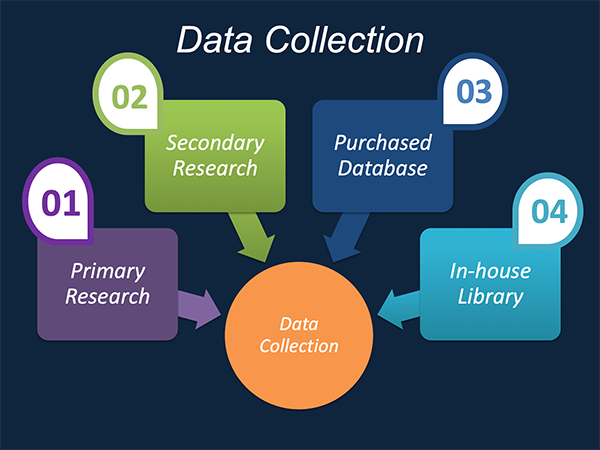
Data Synthesis: This stage includes the evaluation and assessment of all the data acquired from the primary and secondary research. It likewise includes in evaluating the information for any disparity watched while information gathering identified with the market. The data & information is gathered with consideration to the heterogeneity of sources. Scientific and statistical methods are implemented for synthesizing dissimilar information sets and provide the relevant data which is fundamental for formulating strategies. Our organization has broad involvement with information amalgamation where the information goes through different stages:


Market Formulation & Deduction: The last stage includes assigning the data & information in a suitable way in order to derive market size. Analyst reviews and domain based opinions based on holistic approach of market estimation combined with industry investigation additionally features a crucial role in this stage.
This stage includes with the finalization of the market size and numbers that we have gathered from primary and secondary research. With the data & information addition, we ensure that there is no gap in the market information. Market trend analysis is finished by our analysts by utilizing data extrapolation procedures, which give the most ideal figures to the market.
Data Validation: Validation is the most crucial step in the process. Validation & re-validation through scientifically designed technique and process that helps us finalize data-points to be used for final calculations. This stage also involves with the data triangulation process. Data triangulation generally implicates the cross validation and matching the data which has been collected from primary and secondary research methods.





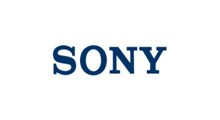

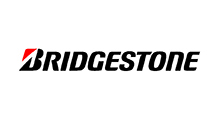

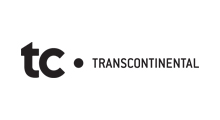















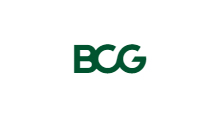


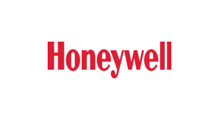

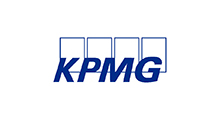
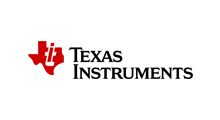



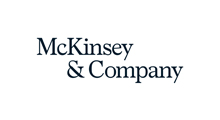

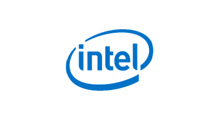







Free Customization
Countries can be added on demand
Free yearly update on purchase of Multi/Corporate User License
Companies served till date

We serve our customers 24x7 for 365 days through calls, emails and live chat options.

Huge database of exceptional market reports bringing market intelligence to your fingertips.

SSL enabled, we offer you various secured payment options for risk free purchase.